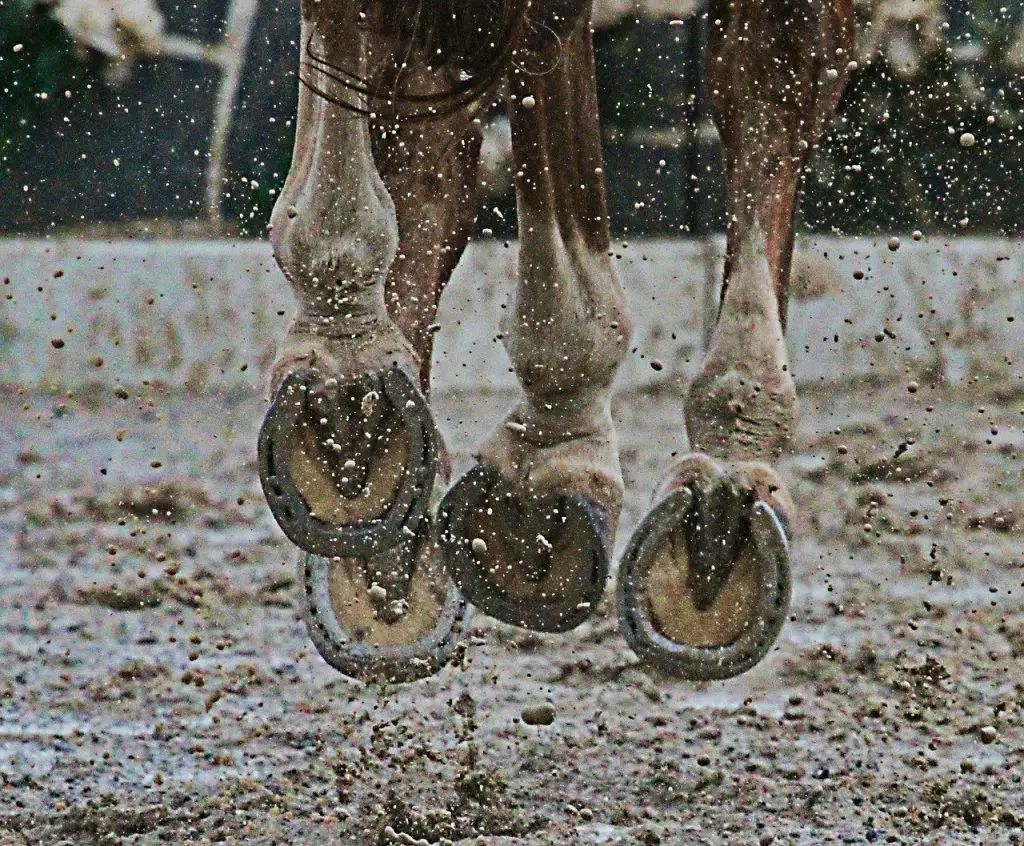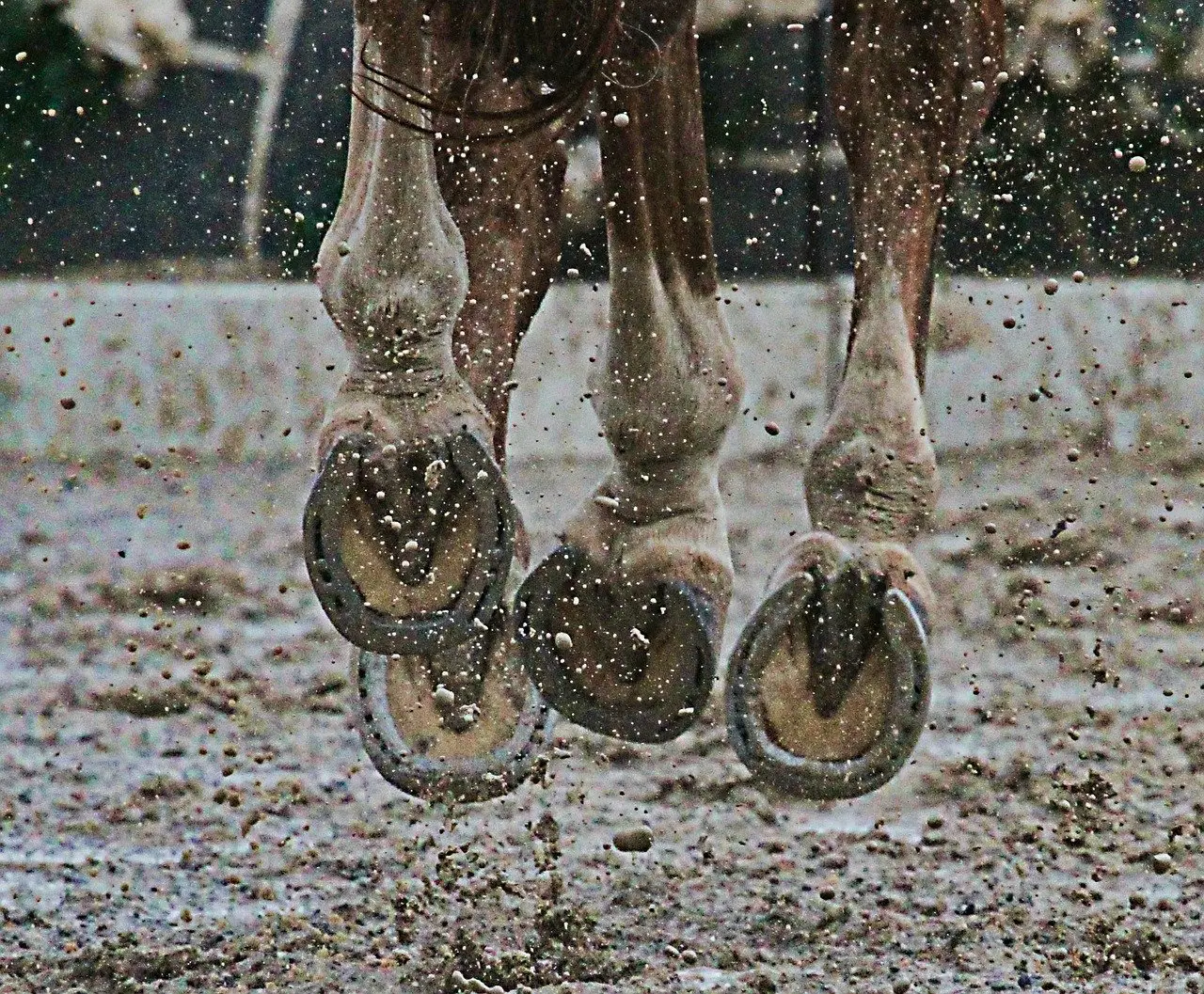Last Updated on February 18, 2022 by Allison Price
What is mud fever?
This term can also be used to describe a variety of skin conditions, commonly known as pastern dermatis. The infection can be caused by bacteria that thrives in wet and muddy conditions. The infection may remain dormant under the skin of the horse and become active only when it is exposed to prolonged wet conditions.
The signs of mud fever in horses include a matted appearance to the skin with crusty scabs and lesions below. The skin often forms a thick layer of fluid between the scab and the top layer.
The horse may react to pressure or flexion, causing heat and swelling. Inflamed and raw-looking skin can eventually result from hair loss. This may cause the horse to have a split at the back of his leg, resulting in horizontal fissures that are typical of cracked heels.
It is important to confirm that your horse has mud fever. If your horse has not had it before, you should call your veterinarian so you can ensure your horse is getting the right treatment. It is important to ensure that your horse’s legs are as dry as possible if they have mud fever.
Avoid churning up your paddock as bacteria can be transmitted through the soil. It is possible to change the point where you enter the field, and move water troughs frequently. Also, straw or sand could be used to cover muddy areas.
Preventing mud fever is better than treating it. However, if you treat the infection as soon as possible, any complications should be quickly treated. You should be vigilant and make sure to check the legs of your horse every day.
How can you treat mud fever?
Even if your efforts fail and your horse gets mud fever, you should still try to dry their legs. Wash the affected legs with a very warm and dilute Hibiscrub solution (preferably 0.1%). Rinse it with warm, soapy water.

Use warm water (never cold), to wash the affected areas. Never apply Hibiscrub directly to horse’s skin. You must dry the affected area completely after washing and rinsing. It can be difficult for horses with thick feathers to dry the area so it may be worth considering cutting them out.
After your horse is dry and clean, apply a thick layer of antibacterial barrier cream to the affected areas. There are many creams that you can use to treat your horse’s skin. Talk to your veterinarian about the best one for you. Always test the cream on a small area of skin for 24 hours before applying it to your entire body. It is important to make sure that your horse doesn’t react to the ingredients.
You can keep your horse stabled at night if you have cling film. Apply a stable bandage to the top. Make sure your horse sleeps on dry, clean bedding. To help reduce scabs, leave the cream, clingfilm and bandages on for at least a night.
The scabs can be gently removed in the morning. This can cause severe soreness and may not be a pleasant experience for your horse. Before you let your horse go, apply another thick layer without any clinging film or bandages. The barrier cream will prevent infection from getting worse and promote healing of any scabs.
Continue this process until all the scabs are gone. The area can be left clean and dry overnight. You can continue to use a barrier cream until the area heals completely.
Cling film and bandages won’t work if your horse can’t be stabled overnight to treat mud fever. You will still need to clean and dry the affected area on a regular basis if that is the case. Then, you should gently remove any scabs and apply a new layer of barrier cream every time.
You should not reapply the barrier lotion over it without first using a warm dilute Hibiscrub scrub wash and then removing any scabs. This would create an environment where mud fever thrives.
How to treat mud fever successfully
- You can treat any infection faster and easier if you catch it early. Make sure to check your horse’s legs every day for signs.
- Mud fever can be treated by keeping your horse’s legs clean.
- It is much easier to deal with the problem if you trim your feathery legs
- Use a warm dilute (0.1%) Hibiscrub solution to clean the affected area. Rinse it with warm, clean water, and dry it completely.
- It is crucial to remove scabs before you can begin the healing process
- A barrier cream is a good way to prevent infection from spreading and promote healing.
- If you are unsure, contact your veterinarian!


